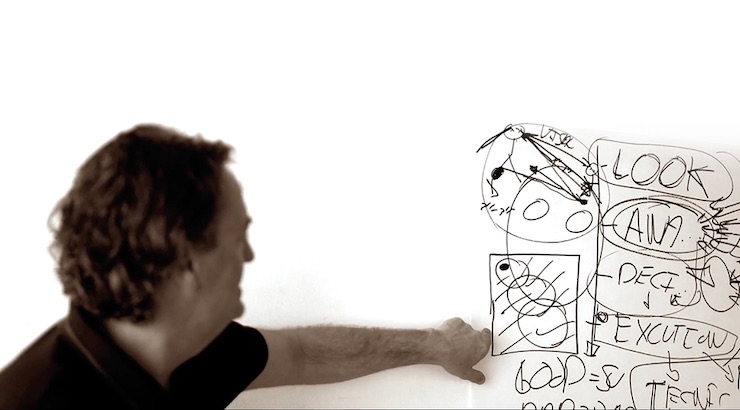COACHING YOUTH SOCCER PLAYERS vs PROFESSIONALS
Albert Puig is a former FC Barcelona Youth Technical Director and now the Assistant Coach of New York City FC. A globally respected leader in player development, Puig’s famed La Masia developed the likes of Andres Iniesta, Gerard Pique, and Lionel Messi. Puig is the founder of APFC Courses – a program to help educate soccer coaches.
What are the big differences between youth and professional soccer?

When we talk about the difference between youth and professional soccer, we can approach the discussion from several angles.
In this article, I would like to mainly refer to two of them.
- First, the differences at the coaching level and
- Then the differences between the type of players one coaches
Youth development and professional players should be handled as separate as day and night. I say should because …
Still today, we usually see coaches handling young players as if they were professionals.
Think about the opposite. Professional players being managed as children; being taught basic principles and individual fundamentals per position. It does not make sense.
Coming back to the way we teach our youngsters, we should always think about the ultimate purpose of our job.
We work for the players and the aim is to prepare them the best we can, to develop them.

This all sounds very obvious, but what does it really mean to prepare them the best we can? One could say, “the best means to get them ready for our first
Both statements work but I prefer to use the second one as you never know what turns life might bring and where they will be.
First, let’s understand what are the tools a player needs to be successful in the game. The general idea is to understand the game but to do so we must grant the player the concepts and insights that the game possesses. And this is the hard part.
Everyone has their opinion on what is relevant in soccer but what comes first?
The priorities and the way we structure the study plan is the key to it all.
After many years of experience, I have seen that the most impactful outcome when we divide the content into general or universal principles, individual fundamentals per position, team fundamentals and, lastly, systems.
The last stage, focused on systems, is the closest one to professional soccer. Players use all this knowledge to adapt themselves to a 4-3-3, a 4-4-2, a 4-2-3-1 or whatever playing formation one can think of.

The study plan for developing players is constantly under construction as each year, each coaching experience changes your perspective as a coach.
We should maintain a core or a backbone of concepts, which remain unchanged, and yet be very flexible to incorporate new ideas and adjust any previous processes.
The backbone a club decides to stick with is what creates its identity. As a personal opinion, I have always thought that associative style, positional play, and its inherent concepts are the best way forward. The reason is simple. Positional style and associative soccer require the player to dominate the ball. In order to do so, you must consequently dominate the game. You need to understand the spaces, the relationships between players and, most importantly, the timings.
Direct soccer basically skips anything that happens between center backs and strikers so we could say it’s kind of a more primary game.
Another question to be resolved is the ages where we should introduce the different formation blocks.

Each player has a different evolution but for the sake of organization, it would be wise not to introduce individual fundamental per positions before U11s. Team fundamentals might be starting around U13s and systems or formation should be left once the player enters the last stage of development (U16-U18).
This last point gives way to the second part of this article: the differences between the type of players we deal with during youth development and professional soccer.
Kids are sponges, they absorb everything. They are much more clever than adults and this fact needs to be taken into consideration.
Why would we stick to an invariable playing system or formation? Why would we ask them to put victory over defeat? We should be very careful about our vision of winning. The best way to win is to know more than your opponent and not to risk less than your opponent. In the first one, you really win. Through the second one, you expect not to lose and you might win.
Are you following me?

Once we have all this information at hand, we need the time, the patience, passion, and persistence to let our youngsters grow into the later stage. The more the child grows, the higher the level she will play in and consequently, the more competitive they will become. The system itself teaches players how to be competitive. If they are not, they will not make it.
It is in this competitiveness that we see the major difference between young players and professional athletes. The sponges start to become stones and the professional athletes are the best in selecting what kind of behaviors/concepts/ideas make them shine the most.
A professional soccer player is nothing but the sum of all her successful behaviors and adaptations.
We need to try to create an environment where the players are the ones who consciously are making the decisions. For professional players it is all about being on the market and, for that, they need to play. To play, they need to perform and to perform they need to, at least, not be a liability for the team.
Related Articles: PROS AND CONS BETWEEN YOUTH SOCCER IN THE USA AND EUROPE and ALBERT PUIG ON DEVELOPING BETTER YOUTH SOCCER COACHES





